Bizarre but valuable: Top 10-list of new species 2011 draws attention to biodiversity
Short time ago the International Institute for Species Exploration at Arizona State University anounced their picks for the top 10 new species described in 2011. It’s the fifth time in a row that attention-grabbing species have been nominated to open the world’s eyes for “the biodiversity crisis and the unsung species explorers and museums who continue a 250-year tradition of discovering and describing the millions of kinds of plants, animals and microbes with whom we share this planet,” as Quentin Wheeler, an entomologist who directs the International Institute for Species Exploration at ASU, said.
When you have a look at the gallery below you will have to admit that this year’s list is quite exquisit. It’s members come from Brazil, Myanmar, the Dutch Caribbean, South Africa, Papua New Guinea, Spain, Borneo, Nepal, China and Tanzania. You will find a sneezing monkey there, a beautiful but venomous jellyfish, an underworld worm and a fungus named for a popular TV cartoon character.
The nominations had to be “species that capture our attention because they are unusual or because they have traits that are bizarre,” said Mary Liz Jameson, an associate professor at Wichita State University who chaired the international selection committee. At the institute’s website you will also find a Google world map that pinpoints the location for each of the top 10 new species.
Into the sea, you and me – Biodiversity Day 2012 focuses on marine life
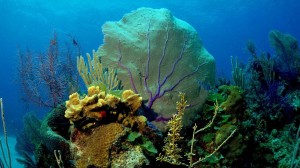 What’s going on under the surface of the sea? That’s what this years International Day for Biological Diversity, or the Biodiversity Day, is about. So the question today is: “How Much Life Is in the Sea?” Over the last decade scientists from around the world tryed to answer that question. The project was huge! The effort involved 2,700 scientists from over 80 nations, who participated in 540 expeditions around the world. They studied seawater and probed the deepest, darkest depths of the ocean, they sailed tropical seas and explored the arctic ice. And the scientists were successfull – after the trip they added 1,200 species to the known roster of life in the sea. And there’s no end to it in sight; scientists are still working through another 5,000 specimens to determine whether they are also newly-discovered species. You ask for the number of known marine species? Well, of course it’s increased to now around 250,000. In its final report, the Census team suggested it could be at least a million. Some think the figure could be twice as high.
What’s going on under the surface of the sea? That’s what this years International Day for Biological Diversity, or the Biodiversity Day, is about. So the question today is: “How Much Life Is in the Sea?” Over the last decade scientists from around the world tryed to answer that question. The project was huge! The effort involved 2,700 scientists from over 80 nations, who participated in 540 expeditions around the world. They studied seawater and probed the deepest, darkest depths of the ocean, they sailed tropical seas and explored the arctic ice. And the scientists were successfull – after the trip they added 1,200 species to the known roster of life in the sea. And there’s no end to it in sight; scientists are still working through another 5,000 specimens to determine whether they are also newly-discovered species. You ask for the number of known marine species? Well, of course it’s increased to now around 250,000. In its final report, the Census team suggested it could be at least a million. Some think the figure could be twice as high.
Share our videos
An easy way to spread the word about GLOBAL IDEAS is to simply embed our weekly video reports into your Facebook account or your own homepage.
Here is an example of how the video will look like after you have embedded it into your own homepage:
To find the specific embed code for one of our more than 100 video reports head over to our GLOBAL IDEAS stream within Deutsche Welle’s Youtube channel and follow the instructions below:
1) Find the video you want to share
2) Click the “share” button below the video
3) For sharing the video on Facebook, the short code you see now is sufficient. Just copy and paste it to your Facebook wall.
For embeddingt the same video to your own homepage, you need the HTML-code. To get this, simply click “embed”. Then just copy and paste it into your website’s CMS.
Spread the word!
Help us spreading good ideas to combat climate change! Simply place a link to our GLOBAL IDEAS homepage, where we showcase a new, innovative climate project every week.
To spread the word, just choose an image from below, copy the code snippet from the white field and paste it into your website’s CMS.
![]() read more
read more
Mapping the world’s plant and animal life
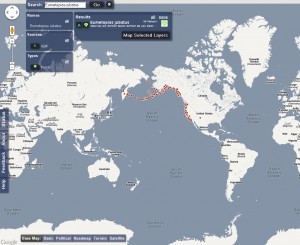 This can become one of the most interesting projects for people who are interested in nature, biodiversity and, of course, the impact climate change on our environment. A team of researchers from Yale and the University Colorado at Boulder have an unbelievable idea. Their plan is to map the distribution of all plant and animal life on earth. This May they have started a demo-version of their Web-based “Map of Life“.
This can become one of the most interesting projects for people who are interested in nature, biodiversity and, of course, the impact climate change on our environment. A team of researchers from Yale and the University Colorado at Boulder have an unbelievable idea. Their plan is to map the distribution of all plant and animal life on earth. This May they have started a demo-version of their Web-based “Map of Life“.
The google maps based tool will be growing constantly, the researchers say. Right now it presents over 25,000 different species of terrestrial vertebrates and North American freshwater fish. But even in this state of being the idea comes crystal clear where this map is going to be within the next months. “Map of Life” uses data from field guides, museums, citizen scientists and groups like the Global Biodiversity Information Facility, the International Union for the Conservation of Nature and the World Wildlife Fund.
Right now it’s possible for the users to search by species, viewing a map of all known distributions, or to view a list of all species records in a specific range of any spot on the map.
The developers also provide a blog to inform about the newest developments on the map.



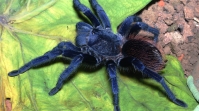
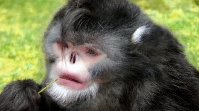
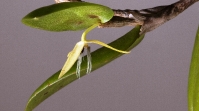





Feedback